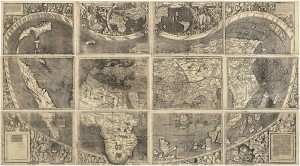April 25 is National Zucchini Bread Day
East meets West Day – National East Meets West Day is observed annually on April 25th. Also known as Elbe Day, this day commemorates the day the Eastern front of the Allied forces met the Western front on the River Elbe.
World War II had been raging for over six years. During the previous year, several events had begun to turn the tides of the war against the Axis powers. In April of 1945, the Allies were marching toward peace, but it would require a coordinated effort from both American troops in the East and Soviet armies from the West.
The armies were not supposed to make contact with each other. They were given orders to remain on their eastern and western banks of the river while officers from each division formalized occupation of Berlin.
However, when the two armies met on April 25th south of Berlin outside Torgau on the River Elbe, patrols were sent across the river in a small boat. The first to make contact were American First Lieutenant Albert Kotzebue and Soviet Lieutenant Colonel Alexander Gardiev along with their commands.
Two days later, photographers commemorated the event of the Eastern front meeting the Western front.
World Penguin Day
Birthday of Guglielmo Marconi, April 25, 1874, Italian electrician who perfected wireless telegraphy
 1507-04-25 – Geographer Martin Waldseemuller first used name America. He and Matthias Ringmann are credited with the first recorded usage of the word “America”, on the 1507 map Universalis Cosmographia in honour of the Florentine explorer Amerigo Vespucci.
1507-04-25 – Geographer Martin Waldseemuller first used name America. He and Matthias Ringmann are credited with the first recorded usage of the word “America”, on the 1507 map Universalis Cosmographia in honour of the Florentine explorer Amerigo Vespucci.
The Thornton Affair of April 25, 1846, was a battle in 1846 between the military forces of the United States and Mexico, twenty miles west along the Rio Grande from Zachary Taylor’s camp. The much larger Mexican force completely defeated the Americans in the opening of hostilities, and was the primary justification for U.S. President James K. Polk’s call to Congress to declare war.
 April 25, 1847 – The last survivors of the Donner Party were led out of the wilderness. The group left Missouri in the late spring of 1846. The journey to California normally took 4-6 months. After reaching Wyoming, most California-bound pioneers followed a route that swooped north through Idaho before turning south and moving across Nevada. The Donner Party took a “shortcut”. They bypassed established trails and instead crossed Utah’s Wasatch Mountains and the Great Salt Lake Desert. The desolate and rugged terrain, and the difficulties they later encountered while traveling along the Humboldt River in present-day Nevada, resulted in the loss of many cattle and wagons. By early November, the migrants had reached the Sierra Nevada but became trapped by an early, heavy snowfall near Truckee Lake (now Donner Lake) high in the mountains. Their food supplies ran dangerously low, and in mid-December some of the group set out on foot to obtain help. The relief party did not arrive until the middle of February 1847, almost four months after the wagon train became trapped. Of the 87 members of the party, 48 survived the ordeal.
April 25, 1847 – The last survivors of the Donner Party were led out of the wilderness. The group left Missouri in the late spring of 1846. The journey to California normally took 4-6 months. After reaching Wyoming, most California-bound pioneers followed a route that swooped north through Idaho before turning south and moving across Nevada. The Donner Party took a “shortcut”. They bypassed established trails and instead crossed Utah’s Wasatch Mountains and the Great Salt Lake Desert. The desolate and rugged terrain, and the difficulties they later encountered while traveling along the Humboldt River in present-day Nevada, resulted in the loss of many cattle and wagons. By early November, the migrants had reached the Sierra Nevada but became trapped by an early, heavy snowfall near Truckee Lake (now Donner Lake) high in the mountains. Their food supplies ran dangerously low, and in mid-December some of the group set out on foot to obtain help. The relief party did not arrive until the middle of February 1847, almost four months after the wagon train became trapped. Of the 87 members of the party, 48 survived the ordeal.
1901 – New York becomes the first U.S. state to require automobile license plates.
Anniversary of the opening of the Saint Lawrence Seaway for lake traffic to the Midwest on April 25, 1959.
1960 – The U.S. Navy submarine USS Triton completed the first submerged circumnavigation of the globe.
